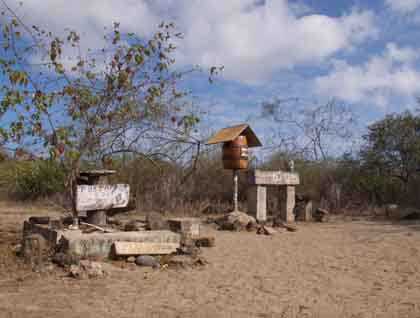Floreana is not its official name, but I love it! We know it derives from the name of our first president, Juan José de Flores, but I prefer to think it comes from flowers, as I associate the island with lush vegetation, green, and of course yellow, as that’s the paramount color of our Galapagos flowers.
So here we are, on an island that is high enough to support different vegetation zones, at a place famous for its mysteries and disappearances – but also for its beauty: its brackish lagoon with pink flamingos, its islets rich in marine life, its post office barrel, an old tradition for every visitor to the Galapagos.
We have done it all; we have encountered species unique to this one place in the whole world, like the Scalesia villosa and the Floreana mockingbird. Here it’s easy to understand how evolution works, to identify the factors inherent to the biology of islands.
In 1886 Joseph Hooker, a botanist and close friend of Darwin, delivered a lecture where he recognized the essential clues, not just for understanding evolution as it happens on islands (as David Quammen explains in “the flight of the iguana”), but for understanding how island oddities help understand evolution as it happens everywhere: impoverishment, disharmony, loss of dispersal ability, size change and extinction.
Islands like Floreana are laboratories of evolution as “they have more than their share of unusual species. But fewer than their share of species overall,” (David Quammen).









